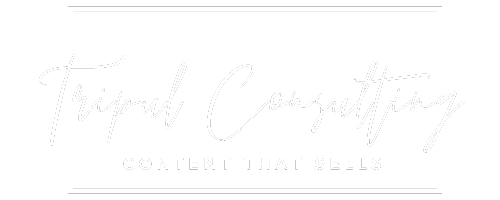5 Tips for Better Sales Copy
You have about five seconds to convince someone you're worth their brain space. And that’s on a good day.
Research from the Behavior and Information Technology Journal reveals that people form an impression of a website in as little as 50 milliseconds. About 90% of the first impression is shaped by non-verbal elements, like design and images.
BUT…
While design grabs attention, your copy makes the sale.
If you want to move your brand out of “just friends” territory, you gotta become a better writer.
Here are 5 tips to do that:
#1: Stop trying to sound smart
If you’re writing marketing copy, you should be aiming for a 4th or 5th-grade reading level. Yes, really.
It was good enough for Steinbeck, so it’s good enough for you. And your web copy or email isn’t a novel. It’s sales writing.
No one — no matter how educated — has the time or energy to wade through dense, academic language while skimming their inbox.
Be direct. Write in short sentences. Donald Miller says the sign of an amateur writer is a long sentence. Ouch.
#2: What's the one thing?
Narrowing your message might be the hardest discipline in marketing. Most clients want to tell all the things to all the people. Resist the urge.
Pick one ideal customer and ask yourself: what’s the STRONGEST, most positive emotional result of them working with you? Make that your headline, your hook, and your heartbeat across every piece of content.
You don’t need to say everything — just enough to get to “yes.” Once they’re in, the conversation continues. They’ll discover the rest of your brilliance on their own.
#3: Cut the commas
Commas weigh sentences down. They’re one of the bad habits I’ve carried over from my journalism days and I’m constantly challenged to cut them. Consider commas warning signals for sentences that could use some chopping. They also denote passive language.
Instead of this:
Having worked in the industry for two decades, ABC company has helped thousands of clients.
Try this:
ABC company has helped thousands of clients over two decades in the industry.
#4: Avoid insider language
I know, Sunshine. This one’s tough. But no one understands your acronyms or insider jargon. They don’t know what a parabolic microphone is, or why Blaufränkisch grapes are special (and they don’t have time to learn). Imagine explaining what you do to someone’s grandmother. Forget the technical details. Focus on the problem you solve — especially if your business is new or complex. Problems are universal. Everybody’s got ‘em.
#5: Show. Don’t tell.
Instead of saying you're the best, prove it. Use testimonials, customer logos, and social proof to back up your claims.
Images tell the story faster and better than words ever could. Show a happy customer using your product. Quantify your success wherever possible: “We’ve helped 1 million people solve this problem” hits harder than “We’re experts.”
Numbers build trust. Are you 30 times faster than your competitors? Did a customer improve their results by 60% after working with you? Say so. Make a list of all the claims you want to make. Then read it back and picture someone saying, “OK, prove it.”
Final Thoughts
Writing is hard. (Anyone who says otherwise is lying or trying to sell you a $97 course.)
Clear writing is a competitive advantage, so it’s worth investing in. You don’t have to be highly creative, you just have to be relentless about clarity, brevity, and connection.
When in doubt? Cut the word count. Sharpen each sentence. Keep it human.
Whatever you do, don’t fall in love with your first draft.

